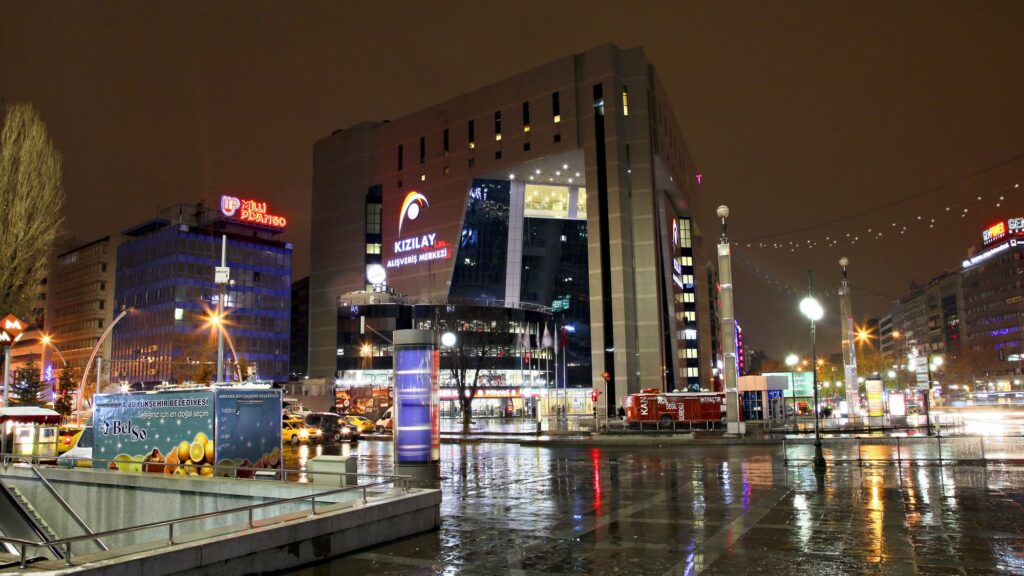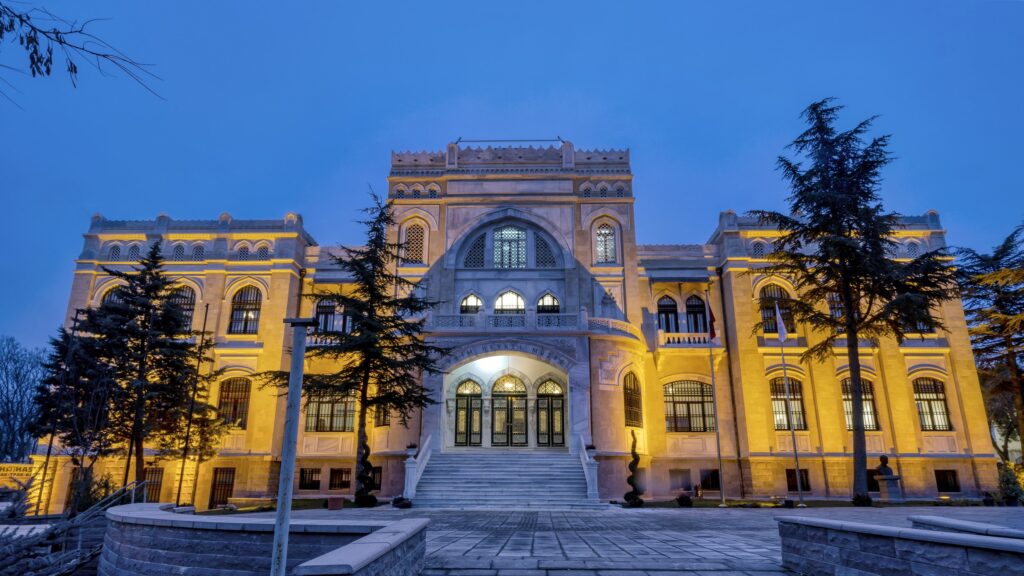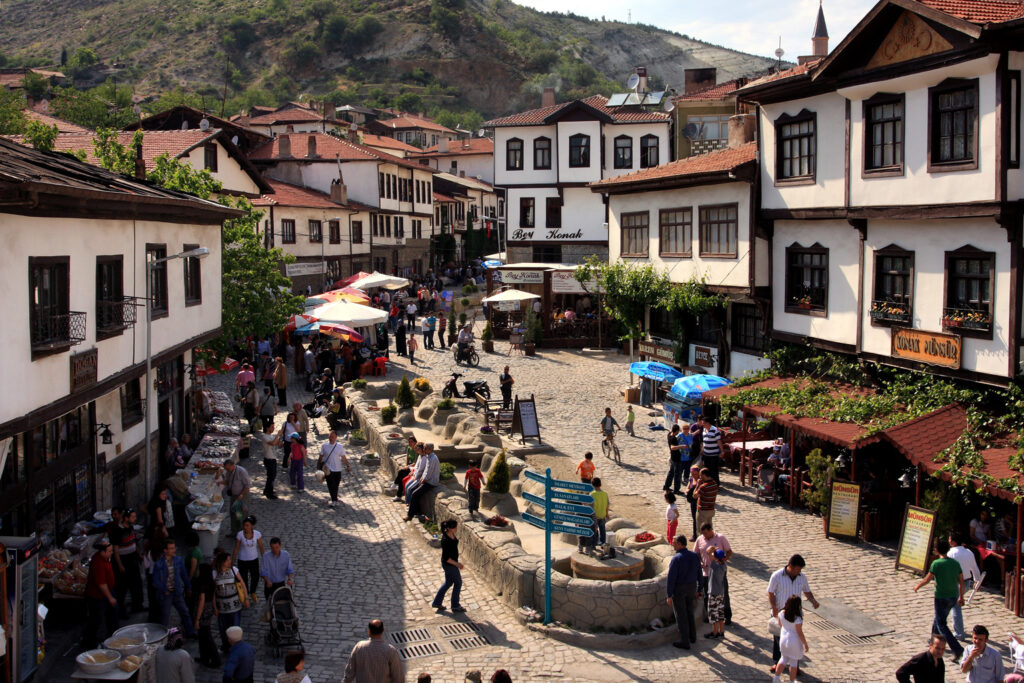ANKARA TRAVEL GUIDE
Introduction
Ankara Visit : Ankara is Turkey’s beating heart, second largest city, located in the Central Anatolia region and home to the Grand National Assembly of Turkey. The hub of many great civilizations with a history dating back to the Stone Age, Ankara and its landmarks are still of great importance in the present day. In 1923, Atatürk chose Ankara to be the newly born nation’s capital, mainly to emphasize a secular rather than a religious seat of government. Apart from the old town in and around the citadel near Ulus, and unplanned shanty town neighborhoods here and there built hastily by new immigrants from countryside since the 1960s, most of Ankara, which was a provincial town of 20,000 people in the early days of the Republic, is a purpose-built capital due to its strategic location at the heart of the country, although the history of settlement in the vicinity is millennia old
But this is no drab metropolis. Ankara has a lively social scene, great restaurants and award-winning shopping malls, with a great deal of history dating back to the Romans to top it all off. The nation’s capital is the place to eat out in style, go to a club, visit art galleries, museums or explore antiques shops. While the biggest claim to fame of the town used to be the long-haired local breed of goats named after the former name of the city (Angora), out of which high quality mohair textiles were produced, today the few places where you can spot them in the city is the lawns in some parks or at the sides of clover-leaf interchanges on the highways—in the form of cute sculptures. Famous for its great museums, parks, honey, Kalecik Karasi grapes and many other cultural and historical assets Ankara welcomes visitors any time of the year. Therefore, going to Ankara is a unique opportunity to experience Turkish cultures and architectures. Related Readings: History of Ankara
Best Tours to Ankara
- Istanbul – Ankara – Cappadocia | 4 Days
- Istanbul – Ankara – Cappadocia | 6 Days
- Istanbul – Ankara – Cappadocia | 7 Days
- Asia Minor Western Promises | 7 Days
- Turkey Western Tour | 8 Days
- Anatolian Legacy | 8 Days
- Turkey Western Tour | 10 Days
How to Get to Ankara?
Flying to Ankara: Airlines operating flights to Ankara include Turkish Airlines and Pegasus Airlines (both via Istanbul). There are many flights during day and night.
Orientation

Ankara is the administrative hub of Turkey and a huge university town, so it has a large population of government workers and university students. As the national capital Ankara is home to a large population of foreign diplomats and embassy staff, it offers goods and services that might be more difficult to find in other Turkish cities — for example you will have no problem ordering a cappuccino or a hamburger. Its population is around 5.7 million (2018). Like most Turks, the locals are generally friendly and helpful to tourists. Ankara has a large university student population and many young people can communicate in English.
The “downtown” area of this large city is around Kızılay Square (Kızılay Meydanı, named after the headquarters of the Red Crescent, the Turkish equivalent of the Red Cross, now replaced by a modern shopping mall) which has a fair number of transportation links to almost anywhere in the city. To the north, Kızılay Square is connected by a wide avenue, Atatürk Boulevard, to the squares of Sıhhiye (Ottoman Turkish for “sanitary works” as this has been the site of the building of the Ministry of Health since the foundation of the republic), marked by an unmissable Hittite monument in the middle of its roundabout, and Ulus (“nation”, the site of the major institutions of the early years of the republic, such as the old parliament), which has a large equestrian monument of Kemal Atatürk, the founder of the republic, at its side. Ulus, the adjoining Hisar district around the hilltop citadel, and Hamamönü just south of it down the hill form the old town of Ankara.

To the immediate south of Kızılay lies the upmarket districts of Kavaklıdere, Gaziosmanpaşa and Çankaya. The city’s most expensive hotels and restaurants are found in this region, as are most of the embassies and consular services.
Southwest of Kızılay, past the aptly named Bakanlıklar (“ministries”) district, İsmet İnönü Boulevard (named after the second Turkish president) leads into the area collectively known as Eskişehir Yolu (literally “the road to Eskişehir”), which is lined by most of Ankara’s large and afforested university campuses and the buildings of the administrative institutions, including the National Parliament. The area becomes exurbs several tens of kilometres out of the city, which eventually give way to the wide open steppe.
The Best Things To Do and See in Ankara
Ankara Painting & Sculpture Museums

Ankara may not have the modern art scene of Istanbul, but there are two galleries, both in the central city, that are well worth a visit. The most important is the Ankara Painting & Sculpture Museum (Türkocagi Sokak, Hacettepe), which has a large permanent collection of Turkish art from the 19th and 20th centuries. All the major names of the Turkish art scene have works on display here. For completely contemporary art, the Cer Modern (3 Altinsoy Caddesi, Sihhiye) is Ankara’s best site. This gallery, based in a disused train depot building, near Ankara’s train station, hosts a regular program of temporary exhibitions focused on both local and international artists.
Ankara Castle (Kalesi) (Map)
If spending time in museums and mosques allows you to see part of Ankara’s history and cultures, then going to Ankara Castle enables you to see the 360 degree of Ankara. Located in the district of Ulus, Ankara castle was originally built as a military defense and is now one of the most popular tourist destinations in Ankara. Unlike the castles in your old storybooks, Ankara castle is a large, dense military stronghold: it is comprised of 4 huge walls, constructing the circular area in the middle of the city, with 42 pentagonal towers running along the top. Although walking up the hill to the castle is not an easy task, the magnificent view that awaits at the top certainly is, as is the bustling bazaar with dozens of small stalls selling all manner of trinkets.
Anıtkabir
Anıtkabir, as the mausoleum of the first and second President of the Republic of Turkey, is a beautifully designed museum which attracts not only tourists but also historians and architects every year. Anıtkabir, where the museum of Ataturk and War of Independence is located, has a wide collection of paintings and exhibitions. It is divided into four parts, one part being the Road of Lions, a long walkway where you can watch Turkish soldiers on parade. Another part is Peace Park, a large green area bursting with plant-life. There’s even a Turkish flag made entirely out of flowers! Other parts include Ceremonial Plaza and the Hall of Honor where the tomb of Ataturk, the first president, can be found. There’s a lot to remember and a lot to see, so audio guides (which are available in many languages from the visitor center) are a good idea.
Museum of Anatolian Civilizations

The Museum of Anatolian Civilizations, named as Museum of the Year in Switzerland in 1997, has a large collection of Anatolian archaeology exhibits chronologically arranged from the Paleolithic era to the present day. It acts as an introduction to the ancient history of Turkey and Ankara. You will see many housing artifacts and Hittite figures, the origins of which can be traced as far back as the first millennium BC.
Gençlik Park

If you take the train to Ankara, one of the first thing you will see as you pull into the station is the ferris wheel at Gençlik Park! Gençlik Park is a public park with a difference: as well as 69 acres of greenery and water features, it houses a swimming pool, an amusement park, an open-air theater and two miniature trains! There are also over 40 kiosks in the park selling all manner of wares (make sure to try the authentic Turkish ice cream and fresh corn-on-the-cob) and every evening the main pool hosts a spectacular light show. A whole day and night of fun can be enjoyed at Gençlik Park!
Haci Bayram Mosque

The Haci Bayram Mosque was built in 15th century, dedicated to the founder of Baryam Sufi order. Considered to be one of the most historically significant mosques in Turkey, Haci Bayram Mosque is also one of the most visited. Make sure you see the Arabic calligraphy on the walls, painted engravings on wood and various unique features of the mosque. Some do come for a religious experience, but many make the visit to appreciate the architecture and history of this great monument.
Roman Bath

Visiting the Roman Baths in Ankara is a good way to learn Roman history through little stories, statues, and inscriptions. Constructed in the third century by the Roman Emperor Caracalla, the baths were built around three principal rooms: the caldarium (hot bath), the tepidarium (warm bath) and the frigidarium (cold bath). The baths were in use up until the eighth century when they were destroyed by fire leaving only the ruins of the basement and first floor. Whilst only ruins, these Baths are remains of ancient history and therefore the aura of wonder and mystery that surrounds them is palpable.
Surroundings of Ankara
Eymir Lake

Eymir Lake (17 kilometers south of the central city) and its surrounding pine tree forest is one of Ankara’s most popular spots for a nature break from the big city bustle. On sunny weekends, the lakeside area can get packed with locals out for a picnic, but on weekdays, it’s much more peaceful. For a long stroll, run, or cycle, the road that loops for 10.5 kilometers around the lake is Ankara’s nearest outdoor destination. For cyclists, bicycles can be rented on-site while keen walkers wanting to head further into nature can tackle the various walking trails that head into the forest. The southern side of the lake has plenty of restaurants and cafés, which are hugely popular with locals for long and lazy breakfast feasts on weekends.
Gordion

Ankara is the best base for a day trip to the Iron Age Phrygian capital of Gordion. This was the site once home to the legendary King Midas and the location where Alexander the Great cut the Gordion knot. Today, the remnants of this Phrygian city sit amid the fields of the sleepy farming hamlet of Yassihöyük (96 kilometers southwest of Ankara).
There are two main sites in the village. The most famous is the Midas Tumulus – an artificial earthen mound over 50 meters high that contains the tomb of a Phrygian king. Despite its name, there is no evidence that the king buried here was actually the Midas of legend.
You can walk through a tunnel in the tumulus up to the tomb, though the burial goods found here are in the Museum of Anatolian Civilizations, not on-site. There’s a small museum across the road from the tumulus, which holds some finds unearthed from the archaeological work here as well.
At the other end of the village is the citadel mound, which is home to ruins from a range of eras. Although the ruin layout of various walls, arches, and foundations is rather confusing to non-experts, there are plentiful information panels on the citadel mound, which explain both the site and Gordion’s history.













